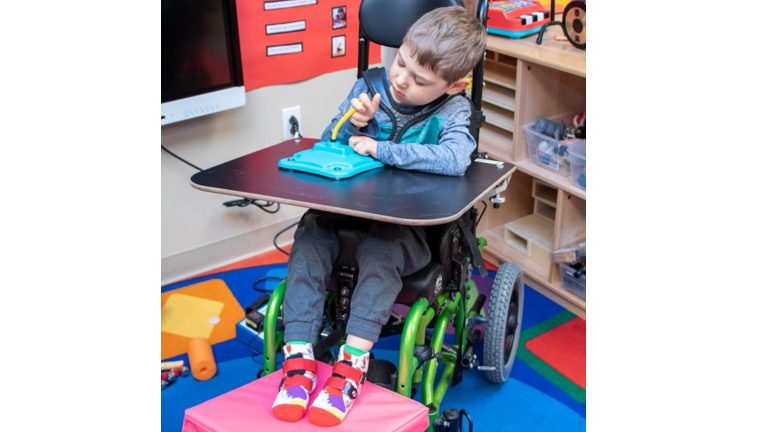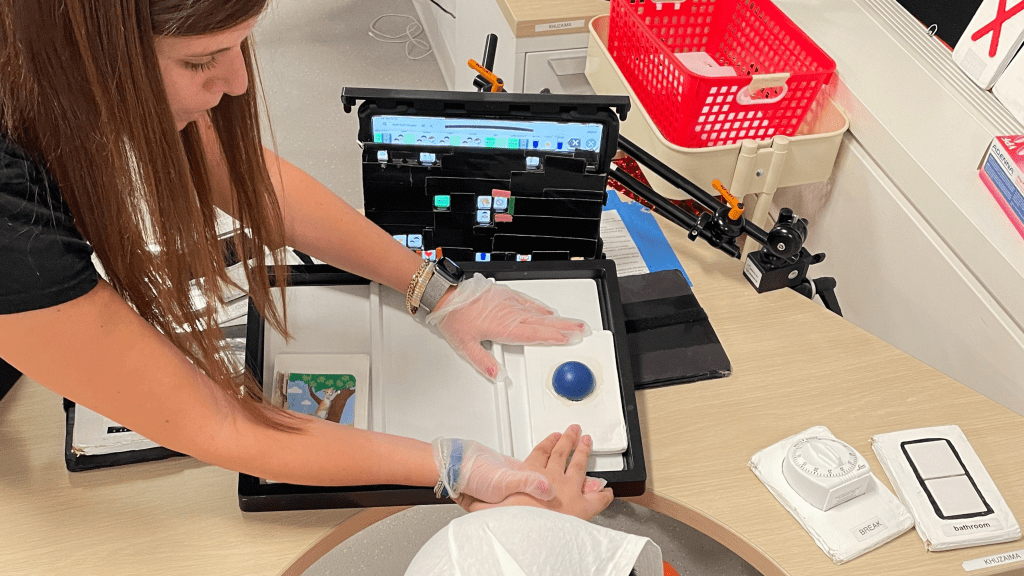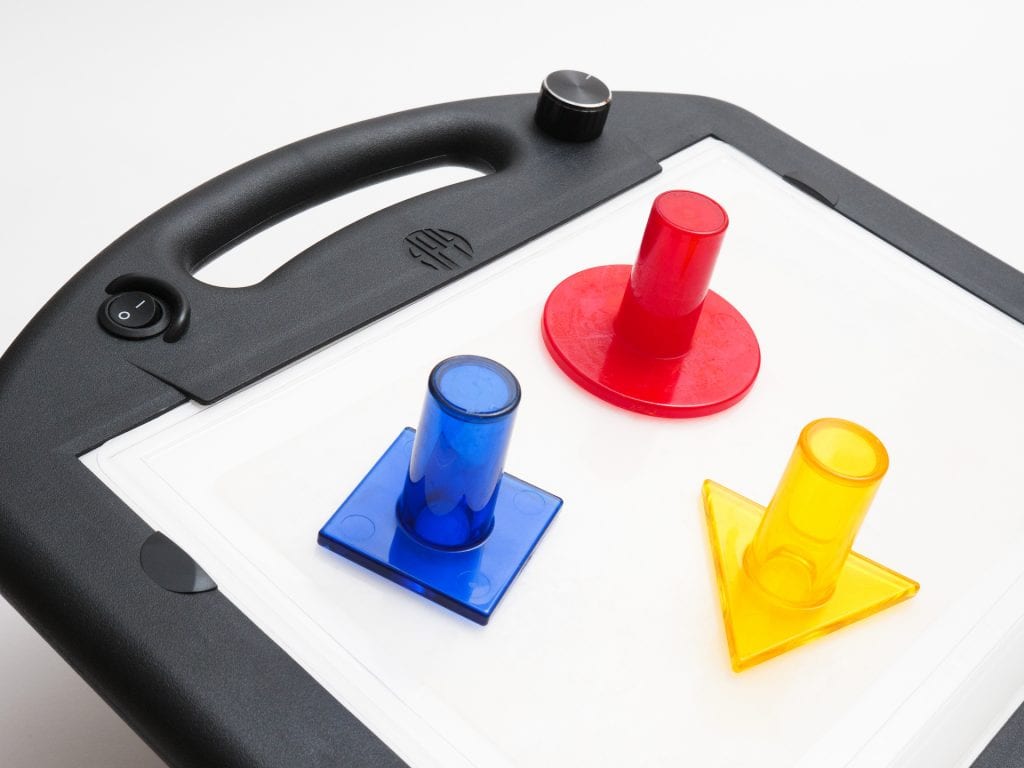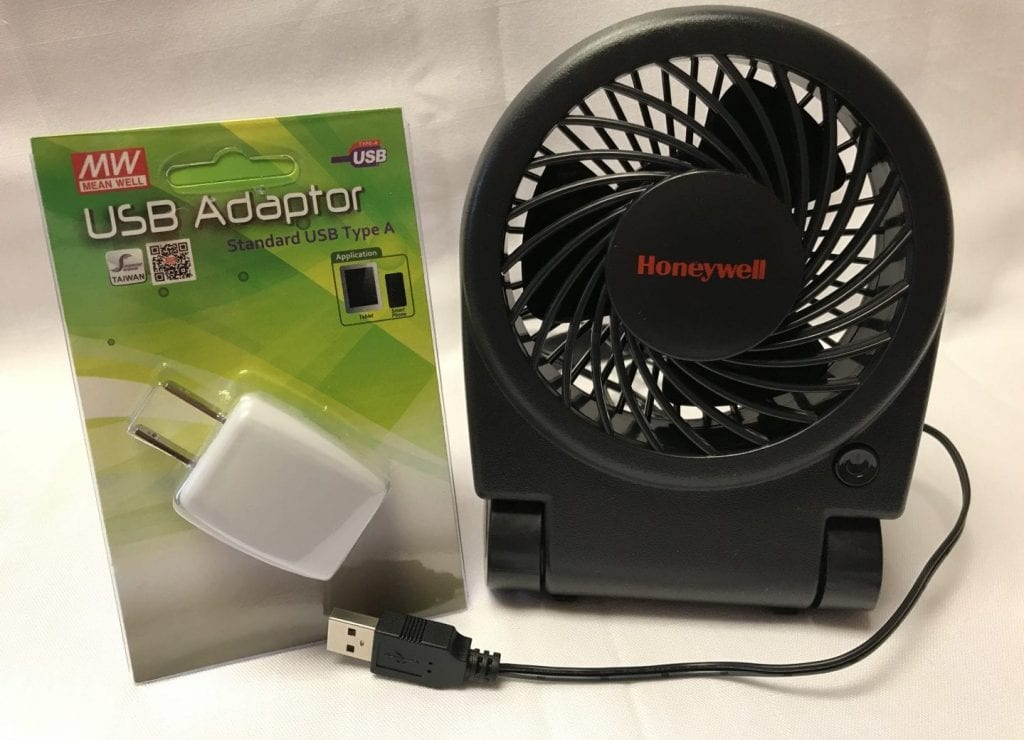Following the Path of APH’s Intervention Continuum

APH is dedicated to helping educational professionals provide meaningful instruction to learners with visual impairments who also have significant additional disabilities. In 2005, we launched the Sensory Learning Kit (SLK), authored by Millie Smith, which would later become the first product defining APH’s Intervention Continuum (IC). Today, the IC consists of multiple products following the first two global stages of the Piagetian model of cognitive development:
- Sensorimotor: concrete, egocentric concepts acquired in here and now experiences
- Preoperational: abstract concepts, semantic content, and rules
The stages are additive, and the boundaries are fluid, therefore specific stages are not cookie-cutter bound to a specific product within the IC for every learner. Learners may advance to the next stage in a familiar routine but may need to remain in their present level for a new object/person routine.
APH Intervention Continuum
Let’s take a walk down the IC path and visit APH’s products that can support teachers and learners with visual and multiple impairments.
Sensing and Learning (formerly SLK)
Sensing and Learning is a book, but it is also a program (not a kit) for learners who—at any age—need accommodations and support to overcome sensory barriers that compromise attention to, exploration of, and use of media needed for learning sensorimotor stage skills. Authored by Millie Smith and Stacey Chambers, it is the first stop along the IC—addressing early sensorimotor skills. It provides three assessments: present level assessment, sensory efficiency assessment, and learning media assessment. The program outlines opportunities to teach, measure, revise, and expand using a routine collaboration guide, an accommodation guide, and a sensorimotor routines lesson plan. The program uses the instructional strategy called “routines” to provide highly effective instruction to sensorimotor stage learners. A routine is a special type of activity because it happens the same way each time it occurs. The program includes an explanation on when and how to add Van Dijk calendar steps during the routine teaching process. APH offers Expandable Calendar Boxes to assist with adding calendar steps to a learner’s routine. APH’s YouTube channel houses sensory learning videos that highlight learners performing routines while learning cognitive skills of reach, imitate, cause and effect, and means/ends. APH offers assistive products to accommodate learners when performing routines or other daily activities, including:
- Power Select
- Select Switch
- Scallop Switch
- Adaptable Tactile Switch
- Adaptable Stick Switch
- Vibrating Pad, switch-adapted
- Turbo Fan, switch-adapted
- DC Supplement Adapter
SAM: Symbols and Meaning
SAM: Symbols and Meaning is a program and kit that provides strategies for developing a strong sensory foundation for concepts about people, objects, actions, and places so that symbols referring to them are meaningful. Also authored by Millie Smith, this second stop along the IC is for learners with visual and multiple impairments and pre-school children with visual impairments who are just beginning to use symbols—the late sensorimotor and early preoperational stages of cognitive development. Teachers of students with visual impairments use SAM to help parents and classroom teachers create daily learning opportunities that provide direct instruction in natural environments.
SAM includes four assessment tools comprised of two symbol and referent analyses and two gap inventories. SAM uses games to reinforce the meaning of symbols and to expand the use of symbols to communication contexts, such as books. Smith says that the emotions associated with the strategies used to help learners develop concepts may be as important as the concepts themselves. Interactions between learners and partners participating in the games should result in feelings of comfort, safety, confidence, success, and pleasure. There are three SAM game levels: own body; people, objects, actions touching the body; and people, objects, actions, places beyond the body. The kit includes an assortment of items with which to play the SAM games. Watch the SAM games and choose one for your learner.
Tactile Connections and STACS
Tactile Connections: Symbols for Communication (TC) and STACS: Standardized Tactile Augmentative Communication Symbols are tactile communication systems that help educational professionals and parents establish a beginning vocabulary to use with learners who have no means of formal communication. The preoperational stage includes symbolization (symbols, words, or pictures to represent something not in physical contact with the learner).
TC, a kit developed by two TVIs, Kay Jahnel and Kimberly Conlin, and two APH staff members, allows team partners to create individualized symbol cards tailored to a learner’s needs, more specifically, what has meaning to that learner. Because a team partner builds the cards, they can also be made to establish or match a standardized communication system adopted by a school, school district, state, and so forth. TC cards are 3-3/8” x 2-1/4” and come in seven colors, each representing a communication category.
STACS is a set of 27 pre-made white 4” x 6” cards. It is based on the research of Dr. Ellen Trief, who developed it in partnership with Adaptive Design Associates. Two blank cards allow for personalization.
APH publishes the guidebook for both TC and STACS. The TC guidebook is available for separate purchase in Spanish. Consider the needs of each learner when deciding which tactile communication kit to use. Whichever kit you use, always have a minimum of two identical cards for each word—one to use at school and one to use at home—so learning is not diminished over weekends and holidays. Train all team members, including family, before introducing a tactile communication system to a learner.
Our IC path ends here. The fluidity of the IC allows learners to participate in sensorimotor routines, preoperational games, and daily activities throughout a day. A single jingle bell from a bell bracelet that was once used in a bell routine is now used on a tactile communication card to request the desire to listen to music. Please take time to visit all the links within this article. Consider taking a course from the APH Hive about using the sensing and learning approach.
Share this article.
Related articles

Connecting and Communicating Through STACS
Every morning “Z” greets Taylor Lewis with a smile and a wave as she enters her classroom at the International...

Building Your Multiple Disabilities Toolkit
At APH, we specialize in providing accessible products and services for the blind and low vision community. However, we also...

The SLK Is on the Go—Turbo on the Go!
The switch-adapted Caframo fan that teachers and learners love, and has been in the Sensory Learning Kit since its beginning...
